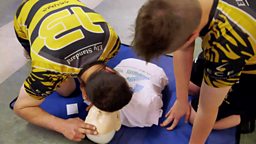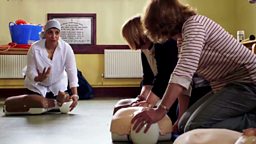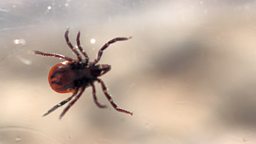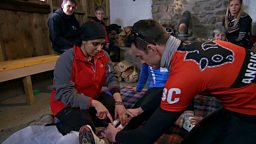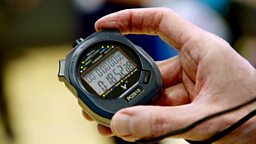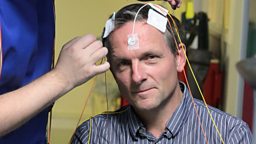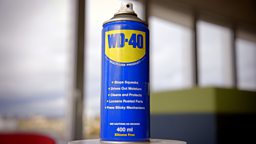How do I treat someone having an allergic reaction?
Severe allergic reactions, called anaphylaxis, can be life threatening.

They happen when the immune system reacts to a substance that it wrongly perceives as a threat, launching an attack that endangers the body’s own tissues and organs.
The most common causes of anaphylaxis are foods like peanuts, tree nuts, fish and shellfish, but it can also be triggered by wasp and bee stings, natural latex and drugs like penicillin, as well as other allergenic foods like eggs, milk, sesame seeds and kiwi fruit.
For some people, a tiny exposure to one of these triggers can be enough to set off an anaphylactic reaction and the symptoms can start within minutes.
The ‘red flags’
During an anaphylactic reaction the body releases chemicals, including histamine, which act on the blood vessels to cause swelling. The symptoms to look out for can be remembered with the letters A, B, C which stand for Airway, Breathing and Circulation.
- Airway – swelling of the throat and mouth, hoarseness, difficulty swallowing
- Breathing – difficulty breathing, wheezing, rapid breathing, severe asthma
- Circulation – pale, clammy, faintness, drowsiness
Other symptoms to look out for are abdominal pain, nausea and vomiting, flushed skin and a rash or hives.
What to do
Patients who are at risk of having an anaphylactic reaction are likely to have been prescribed an adrenaline device. Adrenaline stops the body from producing more harmful chemicals and acts to open up the airways, stop swelling and raise blood pressure.
There are three types of adrenaline device available in the UK. They work in a similar way and are marked with clear instructions for use. The patient should either sit or lie down and the device should be used on the outer thigh, about two thirds of the way down, and held in place for as long as the instructions state. After administering adrenaline you should always call an ambulance and tell the operator that the person is suffering from anaphylaxis - many people will have a recurrence of symptoms.
Adrenaline devices come in different doses for children and adults depending on the weight of the patient. Many experts recommend that those at risk should carry two in case one fails.
If someone is having a severe reaction and there isn’t an adrenaline device available there are still things you can do. Keep the person calm, don’t let them go off on their own, and get them to sit or lie down. If they lose consciousness, put them in the recovery position, and if they have been stung by a bee remove the sting by scraping it out.
Even if someone recovers from a reaction they should still visit the hospital – as many as 1 in 12 victims will see their symptoms return, usually 4-6 hours after the first attack and without any further exposure to the substance that caused the allergy.
Deaths from anaphylaxis are rare, but by recognising the symptoms and reacting quickly we can keep even more people safe.
